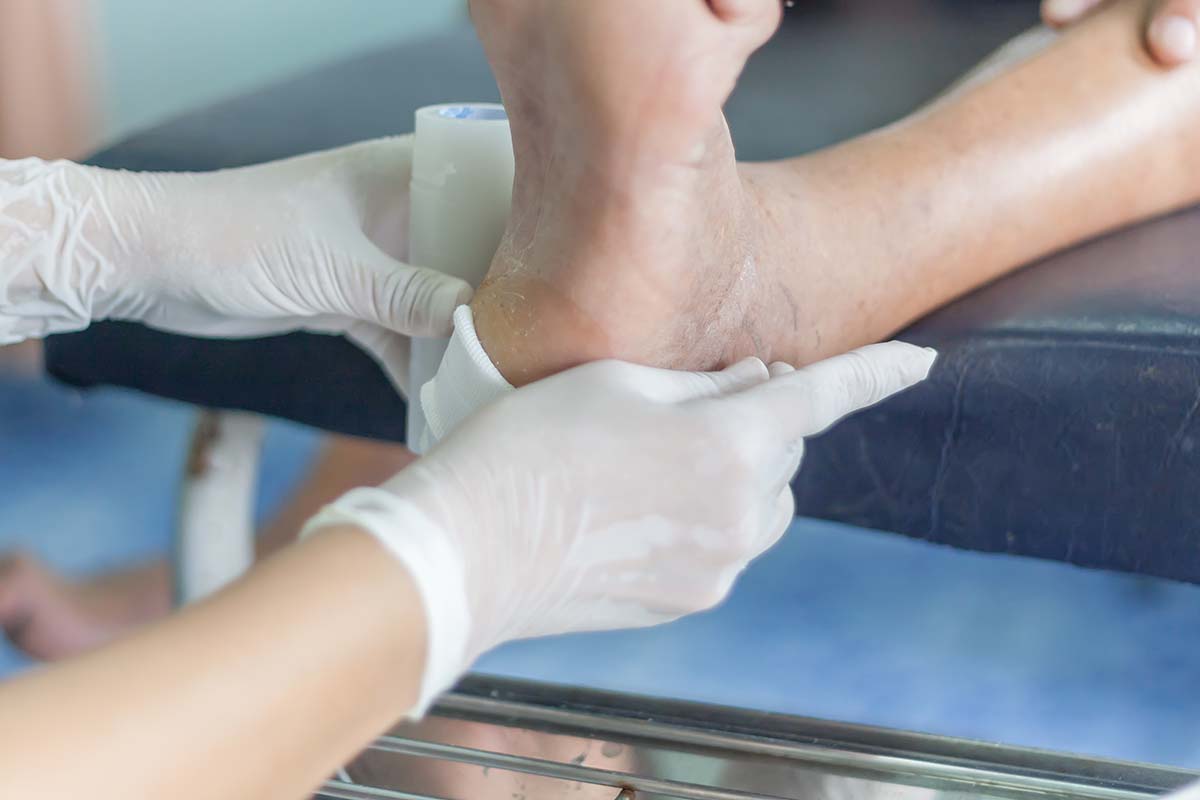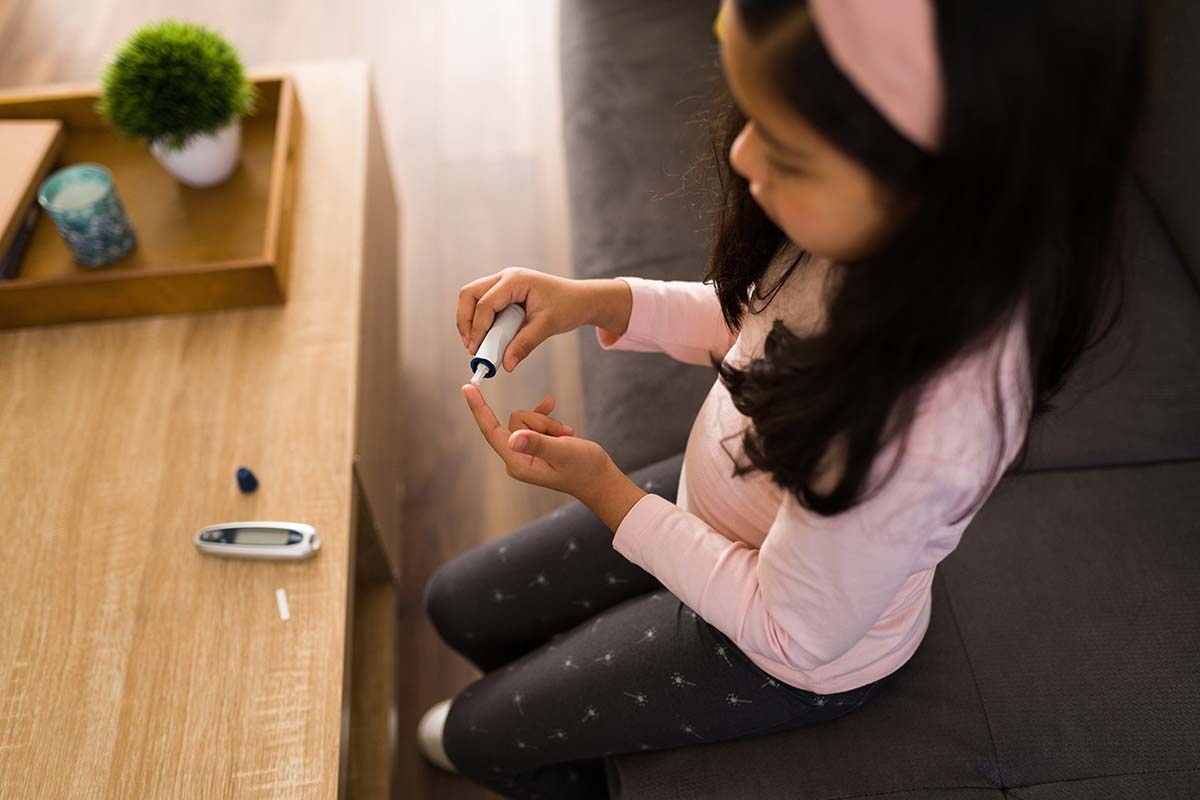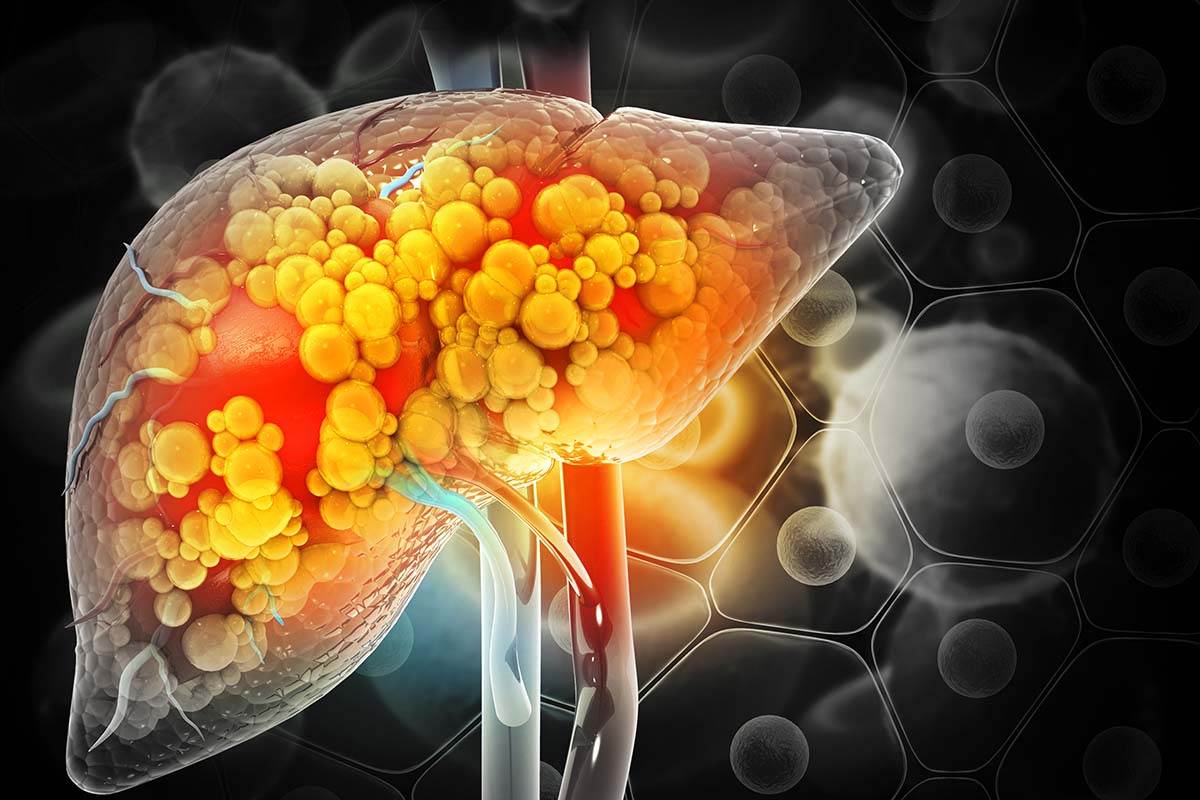Research Updates
New liquid biopsy approach shows promise for finding cancers earlier
In a new NIDDK-supported study, researchers from the University of California, Santa Cruz, have developed a new liquid biopsy approach that may detect cancers earlier. The research findings, reported in Nature Biomedical Engineering, suggest that liquid biopsies that test for repetitive, noncoding RNA in the bloodstream might detect cancers sooner than approaches that look for DNA and proteins. The team identified a genetic mutation that occurs early in some cancer cells, causing them to release noncoding RNA in quantities much larger than do non-cancerous cells. Then, comparing blood samples from healthy people and those with pancreatic cancer, the researchers found that nearly all people with pancreatic cancer had more repetitive, noncoding RNA in their blood. The tests also accurately detected colorectal cancer and lung cancer in other samples. Ultimately, these findings may lead to the development of a single RNA liquid biopsy that can recognize multiple cancers earlier, when treatments are most successful. This research was also highlighted in a recent NIH Director’s Blog.

Dysfunctional exosomes involved in chronic inflammation in diabetic wounds
An NIH-funded study from the University of Pittsburgh and Indiana University examined the role of exosomes in wound healing. Exosomes are tiny fluid-filled sacs released from cells that can carry cargo-like proteins and RNA that deliver important information to nearby cells. The research team found that exosomes produced by keratinocytes, a common type of skin cell vital for wound healing, differed substantially in the chronic wounds of people with and without diabetes. The keratinocyte exosomes made up about a quarter of the total exosomes in chronic wound fluid.

Among study participants with diabetes, the researchers found that fewer exosomes were present in the wound fluid, and they contained less RNA, protein, and fat needed for the exosomes to communicate with other cells normally. In laboratory experiments, the researchers also showed that among samples from people with diabetes, macrophages, a type of immune cell needed for wound healing, stayed in a persistent inflammatory state and attracted additional macrophages towards them, whereas macrophages exposed to keratinocyte exosomes from patients without diabetes showed signs of the resolution of inflammation.
This research was published in Nano Today in October and was featured in NIH Research Matters.
Sleep deficiency increases insulin resistance in women, especially postmenopausal women

Chronic insufficient sleep can increase insulin resistance in otherwise healthy women, with more marked effects in postmenopausal women, according to a study funded by the National Heart, Lung, and Blood Institute, NIDDK, and others. Insulin resistance occurs when the body does not respond well to a key hormone, insulin, and cannot easily take up glucose, or sugar, from the blood.
The study, led by researchers from Columbia University, recruited 40 women, ages 20-75, who had healthy sleep patterns and normal fasting glucose levels, but higher risks for cardiometabolic disease due to having overweight or obesity, or a family history of type 2 diabetes. The researchers found that restricting sleep to 6.2 hours or less per night over six weeks increased insulin resistance by 14.8% among both pre- and postmenopausal women, with more severe effects – up to 20% – for postmenopausal women. Fasting insulin levels rose in response to sleep restriction in premenopausal women, while levels of both fasting insulin and fasting glucose tended to increase in postmenopausal women. The findings, published in November in Diabetes Care, highlight the importance of adequate sleep in minimizing the risk for insulin resistance and type 2 diabetes.
Gut bacteria linked to response to type 1 diabetes prevention drug

NIH-funded research, led by a team at the University of Toronto, found that the gut microbiome may affect how people respond to the diabetes prevention immunotherapy, teplizumab. The researchers found that, in people at high risk for developing type 1 diabetes, immune responses to common gut bacteria were associated with responses to teplizumab treatment and with the time they took to progress to a type 1 diabetes diagnosis. These results were based on analyses of participant data from the NIDDK-supported Type 1 Diabetes TrialNet, which led to the U.S. Food and Drug Administration approving teplizumab in 2022 as the first drug to delay the onset of type 1 diabetes in people at high risk for the disease. The current findings indicate that studying the gut microbiome may be a promising approach to predicting type 1 diabetes progression and how people respond to immunotherapy. The study, published in Science Translational Medicine in October, may also help researchers better understand the varied responses to teplizumab among people receiving the treatment, identify individuals who would most benefit from the drug, and guide recruitment of study participants in future clinical trials aimed at developing therapies for diabetes prevention.
USRDS releases 2023 interactive Annual Data Report

The latest United States Renal Data System (USRDS) Annual Data Report (ADR) is now available. The new report shows the harmful effects the COVID pandemic had on people with chronic kidney disease (CKD) and end-stage renal disease (ESRD), and documents racial, ethnic, and socioeconomic disparities in kidney disease treatment and outcomes. The data is from medical claims through 2021 and includes some ESRD-related metrics through the first half of 2022. Notably, the updated report includes data from beneficiaries enrolled in private Medicare Advantage (MA) plans, made possible by the 21st Century Cures Act. Before 2021, most Medicare beneficiaries with ESRD were unable to participate in MA plans.
The 2023 report also shows that more people with ESRD died during the 2021-2022 report period compared to 2020, and COVID-19-related mortality also increased substantially for kidney transplant recipients. In addition, for the first time, USRDS examined Long COVID and found that a Long COVID diagnosis was two times higher among Medicare beneficiaries with CKD than among those without CKD, two and a half times higher among beneficiaries treated with dialysis, and three times as high among kidney transplant recipients.
Black and Hispanic patients were much less likely to start dialysis at home than White patients according to the report; however, Black and Hispanic patients were more likely than White patients to remain on home dialysis after one year despite other socioeconomic variables.
The USRDS, funded directly by NIDDK, is a national data registry that collects, analyzes, and distributes information on the ESRD population in the United States. Members of the public and research community can send questions about the 2023 ADR directly to the USRDS.
Exposure to discrimination may impact brain-gut communication, lead to poor diet

Recent NIDDK-supported research from UCLA sheds light on a suspected connection between discrimination and obesity. Some racial minority groups in the United States have higher rates of obesity and related health problems. In addition, as the study explains, people exposed to discrimination are more likely to experience stress, which is linked to various adverse health outcomes, including weight gain. The researchers analyzed brain activity and gut samples of participants who reported experiencing high levels of discrimination in everyday life compared to those who reported low levels. In response to unhealthy food cues, such as being shown an image of a high-calorie dessert, those who reported higher levels of discrimination saw increased brain activity in regions associated with reward and self-indulgence and less activity in areas linked to self-control and decision-making. Additionally, they had higher levels of chemicals in the gut associated with inflammation and obesity. These findings, published in Nature Mental Health in October and featured in NIH Research Matters, suggest that brain-gut crosstalk may change in response to discrimination, potentially resulting in increased vulnerability to obesity.
Watching the clock may be more effective than watching calories for adults with type 2 diabetes

Recent NIDDK-funded research from the University of Illinois Chicago found time-restricted eating, also known as intermittent fasting, to be a promising approach to weight loss for people with type 2 diabetes. In time-restricted eating, people limit the time they spend eating each day but do not count the number of calories they consume. The six-month study followed three groups with type 2 diabetes—a time-restricted eating group consuming anything they wanted between noon and 8 p.m., a group limiting daily calories to 25% below the amount needed to maintain their weight, and a control group making no dietary changes. Compared to the control group, participants in the time-restricted eating group lost an average of 3.6% of their body weight, while those limiting calories lost an insignificant amount. The results, published in JAMA Network Open in October, noted similar healthy decreases in average blood sugar levels in both dieting groups. Some in the time-restricted eating group felt that limiting their eating schedule was easier than limiting calories. This research was also featured in NIH Research Matters.
Protein associated with liver damage could be a new target for treatment

NIDDK-funded research at Yale University found a mechanism and potential treatment avenue for nonalcoholic steatohepatitis (NASH), a liver disease characterized by liver fat accumulation when inflammation and cellular injury are present. The researchers used a mouse model of NASH and evaluated how a protein called CYR61 (cysteine-rich angiogenic inducer 61) affected liver damage. They found a greater expression of CYR61 in NASH-injured livers compared with those of healthy mice. They also observed that, as white blood cells arrived in the injured livers, CYR61 caused them to become inflammatory, further driving liver damage. When the protein is blocked in mice by either knocking out the gene that codes for it or by blocking its function with an antibody, NASH-injured mice showed decreased liver inflammation and scarring. The mice also had improved glucose tolerance, indicating the potential utility of this protein in understanding the development of NASH and type 2 diabetes. The research was published in Science Translational Medicine in September.
